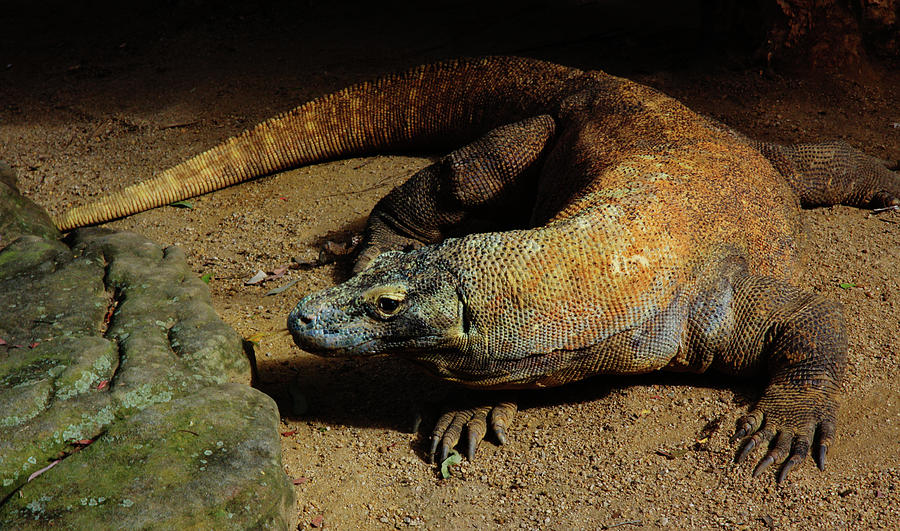

( "Komodo Dragon", 2005 Murphy, et al., 2002) Reproduction At 8 months, they grow too large to be arboreal, alter their diet, and become terrestrial. They are also much smaller and more sinuous than the adults, allowing them to live in trees. Young Komodo dragons live in trees to avoid falling prey to older members of the species. Range length 3.1 (high) m 10.17 (high) ft.( "Komodo Dragon", 2005 Cogger and Zweifel, 1992 De Lisle, 1996) Although males tend to grow larger, there are no obvious morphological differences between the sexes. Their skulls are flexible and have sharp, serrated teeth. The heads of Komodo dragons have a rounded snout and ear openings. They have strong limbs and a powerful, muscular tail. Their robust bodies are uniformly covered in rough scales. Adults dull and uniform in color, from brown to grayish red.

Juveniles are green with yellow and black bands. Komodo dragons are the largest lizards, reaching 165 kg and greater than three meters in length. Young Komodo dragons are arboreal and live in forested regions until they are eight months old. They prefer open lowland areas with tall grasses and bushes, but are also found in other habitats, such as beaches, ridge tops, and dry riverbeds. ( "Komodo Dragon", 2005 De Lisle, 1996)Īdult Komodo dragons live mainly in tropical savannah forests. Varanus komodoensis is found only in the lesser Sunda region of the Indonesian archipelago, including the islands of Komodo, Flores, Rinca, and Padar.


 0 kommentar(er)
0 kommentar(er)
